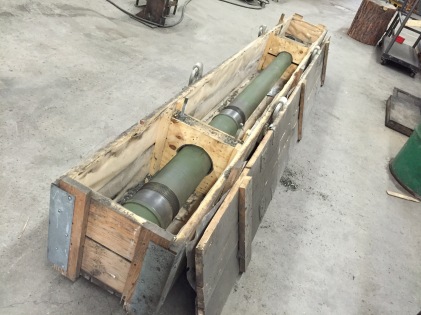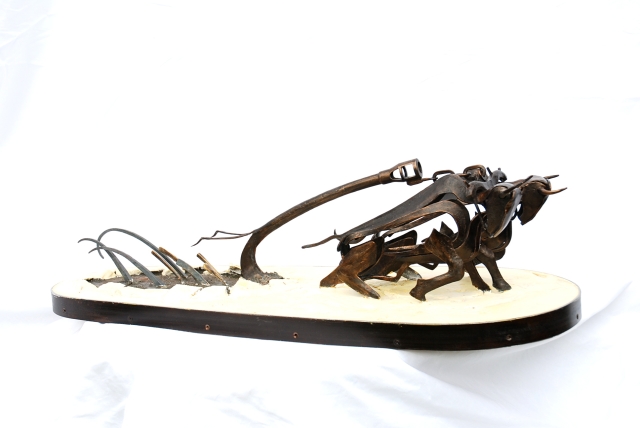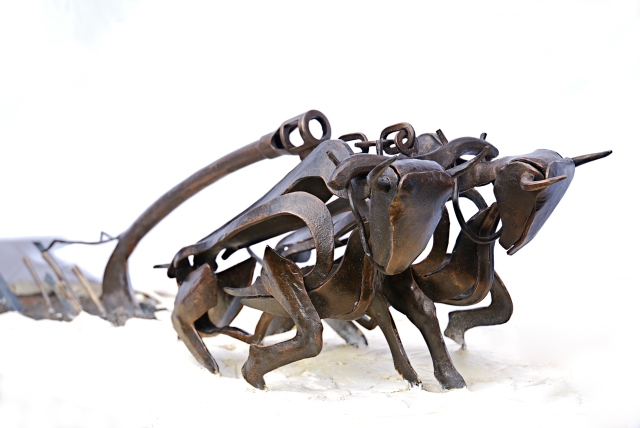As some of you may know I’ve just returned from quick trip to our nations capital. It’s always interesting and exciting to visit a place where the most important decisions for our country are made, but the story of why I was on this trip actually started with a series of contemplative thoughts way back in 2009.
It was the morning of Remembrance Day 2009–I was listening to CBC radio as I was driving and the news that day was about the war in Afghanistan. Hard questions were being asked about what we had accomplished during our time in that war-torn country. The thought hit me that our intentions as a nation in Afghanistan were completely consistent with every conflict in the world that we have been involved with in the last century. By and large, Canada has not gone to war for financial gain, for the addition of territory or for military prestige. We have become involved in conflicts around the world for one purpose only: to cultivate long-term peace.
If Canada has used our military outside of our borders, it has been specifically for this purpose. Contrast that with other military actions by other nations throughout history, and I can truly say that we have an exceptional track record considering the blood-soaked history of mankind.
As an artist, my thoughts invariably veered towards how the concept of peace could be artistically represented in sculpture. The word ‘cultivation’, which led me to the image of a plough, was a natural association. The age-old metaphor, rich with symbolism, of the sword being hammered into the ploughshare was a logical next-step.
As a blacksmith, this image is particularly significant to me because forging a sword into a plough would have been a very challenging dilemma for the average farmer in ancient times. For much of human history, quality steel was extremely rare. A farmer would have been extremely happy to have a good quality steel plough with which to till hard soil to grow food for his family. When war broke out, the Farmer would have had to forge his farm tools into weapons. Changing this plough into a sword would have truly been a life or death decision on many levels: not only was he going to war in which he could die, but he also was taking the most important tool for growing food for his family and turning it into a weapon. Each of these decisions put the farmer and all of his family at risk. If the sword was lost or broken during the battle, the very material that was needed to provide life would have been taken away.
In times of peace the opposite was true. The swords would be brought to the blacksmith who would feverishly transform these weapons of death back into implements of life. Food could be grown, life could be sustained and the family was no longer in jeopardy.
Essentially this is what Canada has attempted to do over the past century. Our goal has been to transform battlefields back into farm fields. Places where once, battles raged have been returned to places where life-sustaining food is grown. The concept of artistically representing this idea is not a new one. My personal favourite is a sculpture that is located in Washington DC by artist Esther Augsburger. In this example 3000 guns surrendered in a gun amnesty were welded together to create massive plough.
Taking this concept a bit farther, my thought was to make a ploughshare out of a single, massive cannon – a challenge to forge no doubt. The only place to get a gun of that size is from the military. That morning, after the Remembrance Day ceremony was finished,  I asked my Member of Parliament Jim Abbott if he could look into acquiring a tank or artillery barrel for the purpose of a sculpture. Jim was immediately taken with the concept and spoke to the Minister of Defence that week. Canada’s Minister of Defence also was very supportive of the concept of the sculpture. He immediately agreed to help acquire the military equipment needed for the sculpture. After a fairly complicated process, we were able to lay our hands on a 105mm Howitzer barrel that was used by peacekeepers in Bosnia and by Canadian Forces in Afghanistan. This gun barrel represents the cornerstone of our sculpture project.
I asked my Member of Parliament Jim Abbott if he could look into acquiring a tank or artillery barrel for the purpose of a sculpture. Jim was immediately taken with the concept and spoke to the Minister of Defence that week. Canada’s Minister of Defence also was very supportive of the concept of the sculpture. He immediately agreed to help acquire the military equipment needed for the sculpture. After a fairly complicated process, we were able to lay our hands on a 105mm Howitzer barrel that was used by peacekeepers in Bosnia and by Canadian Forces in Afghanistan. This gun barrel represents the cornerstone of our sculpture project.
I then approached my artist friend and collaborator Michael Hepher about working on the project. Together we developed the concept further to expand the symbolism, including two Canadian bison pulling our gun barrel/plough. The bison were to represent the strength and determination that we as a nation have put into our task of cultivating peace in the world. To raise support for the sculpture, and test proof of concept, we created a maquette (a scale version of the large sculpture). The maquette alone took hundreds of hours and hundreds of hand-forged pieces to put together.

With the help of Jim Abbott we were able to fly our maquette to Ottawa to present the concept in the inner lobby of the House of Commons in November 2010. The sculpture received overwhelming support from many members of parliament and excitement from all political parties. The question then became how do we fund, and where do we put the sculpture? Unfortunately the answer for these questions has not been an easy one to find.
The sculpture continues to receive overwhelming support whenever anyone sees the concept. Being a sculpture of national significance our first choice would be to have it placed in the nation’s capital. Unfortunately this is proving to be a more complicated task than we had imagined. Five years later we are still looking for a potential home for the finished piece. During that time, our maquette remained on display in the offices of several MPs from a variety of parties.
This saga brings me to my trip to Ottawa this past week. I had some very positive and encouraging meetings on the topic of location with different groups in Ottawa. Michael, myself, and the team that surrounds this project are going to continue to explore all the options for a suitable location for this sculpture. We continue to explore a number of fund-raising avenues for a sculpture of this size, and options for final venue of the finished piece. If you’d be interested in supporting this sculpture logistically or financially, please contact myself or Michael Hepher to let us know how you’d like to be involved.
[Aside] On my way home from my meetings in Ottawa, the model of the sculpture was lost by Air Canada in the Pearson international Airport. This situation is the worst nightmare of any artist: to lose a one-of-a-kind piece of art in transit. Frankly, the Air Canada system for finding lost baggage leaves a lot to be desired. It’s been six days now that the sculpture has been missing. If anyone out there knows of anyone that can help find lost sculptures in Canada’s largest airport please let me know!


Wow! That is beautiful, Paul. I will pray for its safe return. And I hope to one day see the full sculpture whereever it makes its home.
LikeLike
All I can add is “Oh no!!! I had not seen the maquette before. It is a beautiful creature indeed!
LikeLike